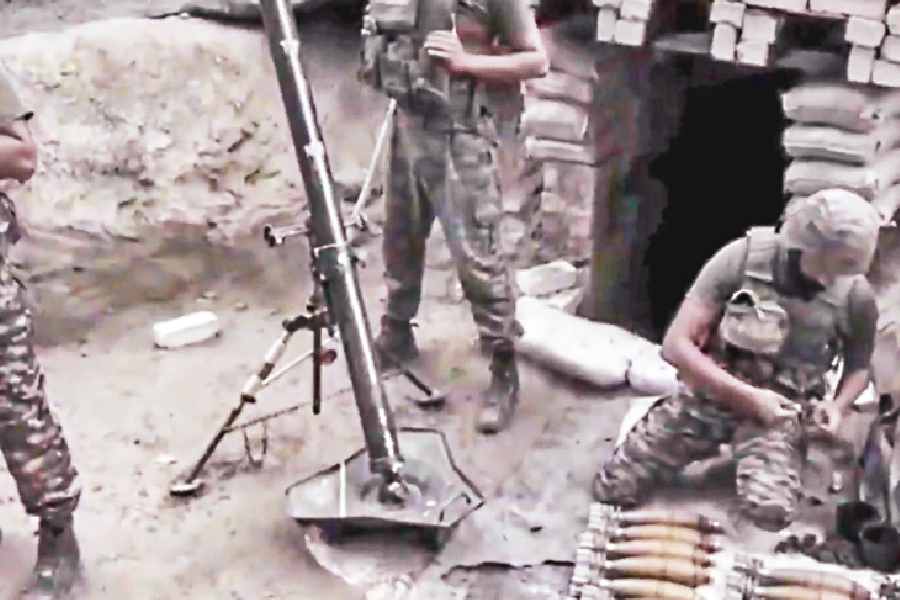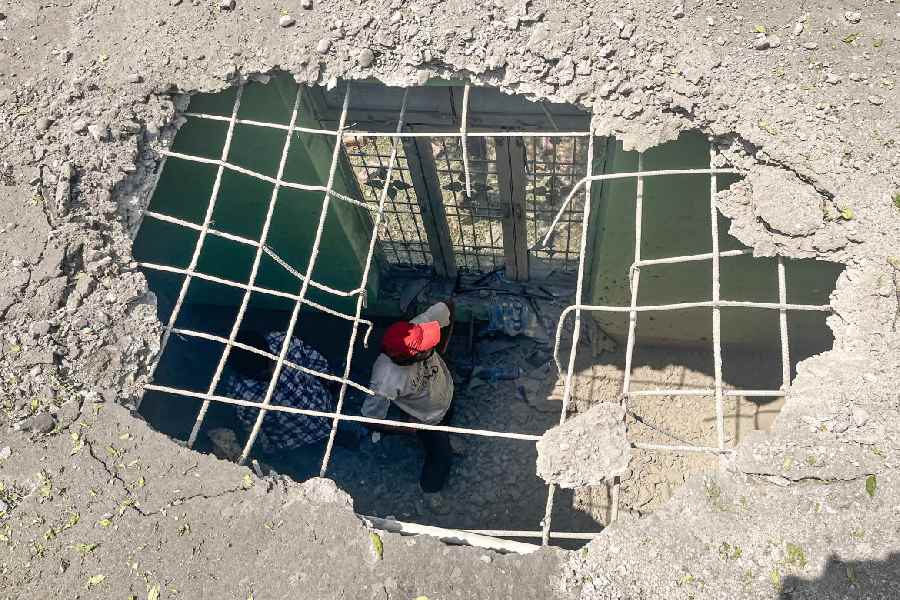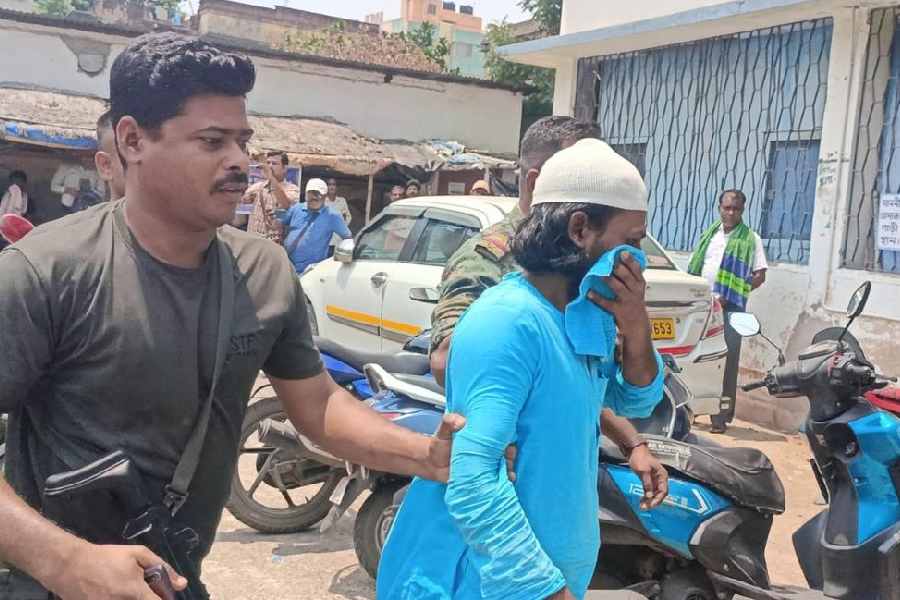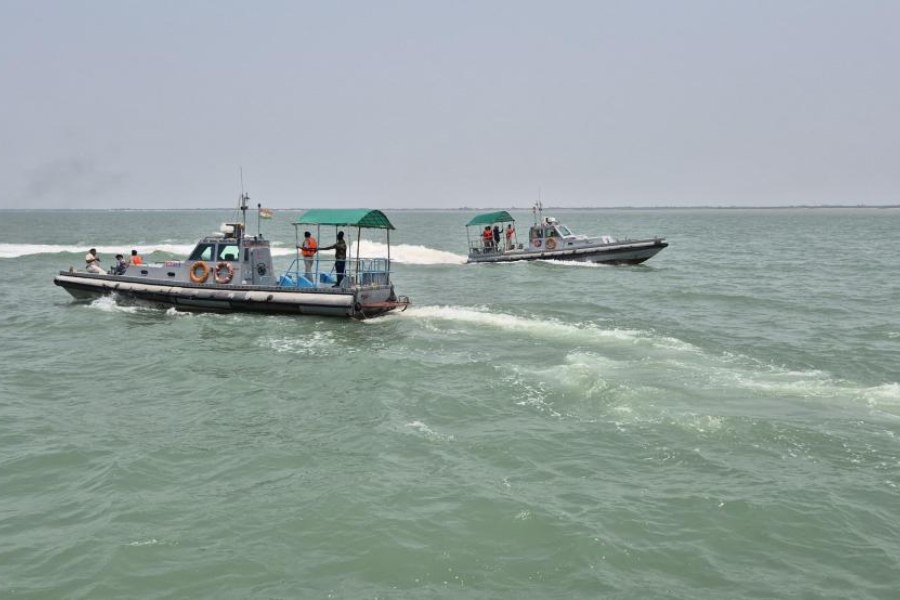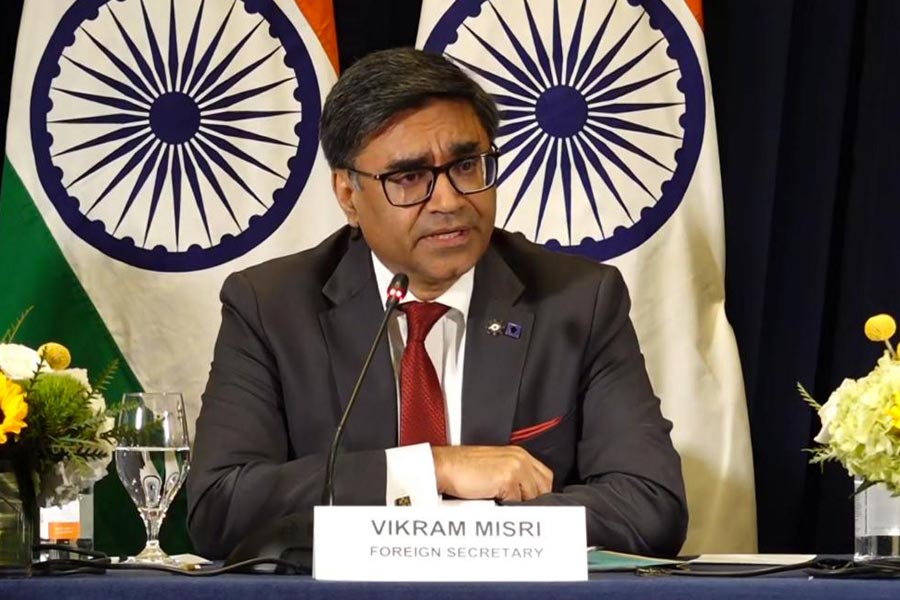 |
Standing tall before a hamlet, a red gate welcomed me to Palamau Tiger Reserve inside Betla National Park. The five-and-a-half-hour drive from Ranchi — through meandering roads sculpted on the lap of greenery and dotted by CRPF camps — could have sapped my energy, but as the wheels screeched to a halt, the glimpse of the forest was enough to get my adrenaline pumping.
The red tourist canteen atop a hillock near the entrance caught my attention. A steaming cuppa was definitely in order. Suddenly, a little boy, also a part of our team, cried out “What’s that?”
Immediately, everyone craned their necks in the direction of the boy’s finger. Eyes widened as a herd of chital raced in a flash from behind a bush to vanish behind another hillock. The glimpse of our ‘deer’ hosts was a refreshing welcome.
The state forest department cottages, well maintained and cosy, were equally welcoming. Each air-conditioned room had a bed, tea table, chairs, dressing table and wardrobe, cane blinds on windows and spacious attached bathroom. A cottage room came for Rs 906. Rooms at the tree house, for the more adventurous, was easier on the pocket at Rs 320 for a room.
The only minus? “The place gets only six to eight hours of electricity per day. Solar energy is a substitute but only for a few hours. During blackouts, generators are used but the tourist has to bear the diesel cost,” said caretaker Khamir Ansari.
But a refreshing bath left me upbeat. And our group was on the top of the world after a modest but finger-licking meal of rice, dal and fried potatoes at the canteen.
As I was savouring my last bite, our guide Md Mustak arrived. Telling us about the thumb rule that no one was allowed in the forest after sunset, he urged us to hurry up and get into our car. Without wasting a moment, we headed for our maiden jungle safari.
Our car sped on the dusty ring road of over 25km towards the jungle - the only part tourists can access.
“Guess what Betla is an acronym for?” Mustak asked us. Seeing our clueless faces, he grinned. “Betla stands for bison, elephant, tiger, leopard and antelope.”
He had uttered the magic words. As if on cue, we began to look around for the animals through the gigantic tree trunks and bushes. Sometimes, we passed by dark bluish-green streams where silent cranes fished for their prey. The blend of light and shadow added to the magic of the jungle where the only sound was silence, occasionally broken by the cries of birds.
After sometime our patience gave way. Forget tigers, we only glimpsed a herd of deer, some monkeys and two foxes.
“The park remains open throughout the year except from July- September, while the climate is pleasant from November to March,” our guide said. “May is the best time to spot tigers when water scarcity forces the king of the jungle to roam around more frequently,” he tried to console us.
But no tiger was around. Heaving a sigh, we came back to the cottage, noticing several watchtowers on the way. “Salt pits are also common in the forest as they are the only source of the mineral for herbivorous animals,” Mustak pointed out.
The sun had long set and we were convinced our luck had set with it too. So we concentrated more on our guide’s nuggets. Suddenly, one of our co-passengers spotted some animals caught in our car’s headlights. They looked like buffaloes but from knee below, they had white fur. Excitement mounting, we turned to our guide. “Yes, they are bisons,” whispered Mustak.
Content with our day’s adventure, we trooped back to our cottages. The moonlight flooded the forest.
The next morning, we were told we would meet Juhi and Anarkali — the two elephants. Mahout Imamuddin brought Juhi near another tree house with the office of the ranger Nathni Singh. The railing of the balcony in the tree house has an open space from where we got clambered on the elephant for a jumbo jaunt.
As Juhi ambled her way into the forest, I tightly held onto the wooden railing of the howdah. Imamuddin the Incredible decided to regale me with his imitation of the alert call a deer makes when it first spots a tiger.
It was also incredible to see how Juhi the gentle giant took us inside the impenetrable forest, tore apart branches casually with her trunk to make way and then brought us back to the ring road. The new animals we saw that day were a giant squirrel and a peacock.
We also met tourist Christopher Randel, a China-based English teacher. “We need to be silent on a safari to spot animals,” the seasoned tourist tipped us newbies.
Tourists are coming from all over — Ranchi, Calcutta, even China. “The tiger reserve saw a footfall of over 28,000 last year,” said DFO Premjit Anand.
Done with elephant safari, our next destination was Sugga Bandh near Baresand, 60km from Betla. Our journey unfolded many small attractions. The first splash of joy was to see for ourselves how a small river criss-crosses the road 10 times and yet is mistakenly named as Satnadia or seven rivers. Koel View Point offers a panoramic sight of the river from a bridge, a shutterbug’s delight. Another scenic retreat was the Marumar guesthouse, nestling among the greens with Hulung Hills as backdrop.
Kechki, 10km from Betla, is another paradise for those who love trips far from the madding crowd. At the confluence of rivers Koel and Auranga, watching a sunset from Kechki can be an other-worldly experience. On the banks of Koel stands a picturesque guesthouse where Satyajit Ray had stayed for months at end to shoot his classic Aranyer Din Ratri.
The ruins of Palamau forts — Purana Quila and Naya Quila — were the last stop on our itinerary. Once the power centre of Chero kings, the dilapidated Naya Quila now offers a breathtaking view of the forest treetops and small hamlets from its highest tower.
We all drove us to our cottage, spellbound.
A treasure trove of flora and fauna, waterfalls, historical ruins and unspoiled rustic beauty, there can be no better getaway than Betla. And yes, tiger next time





